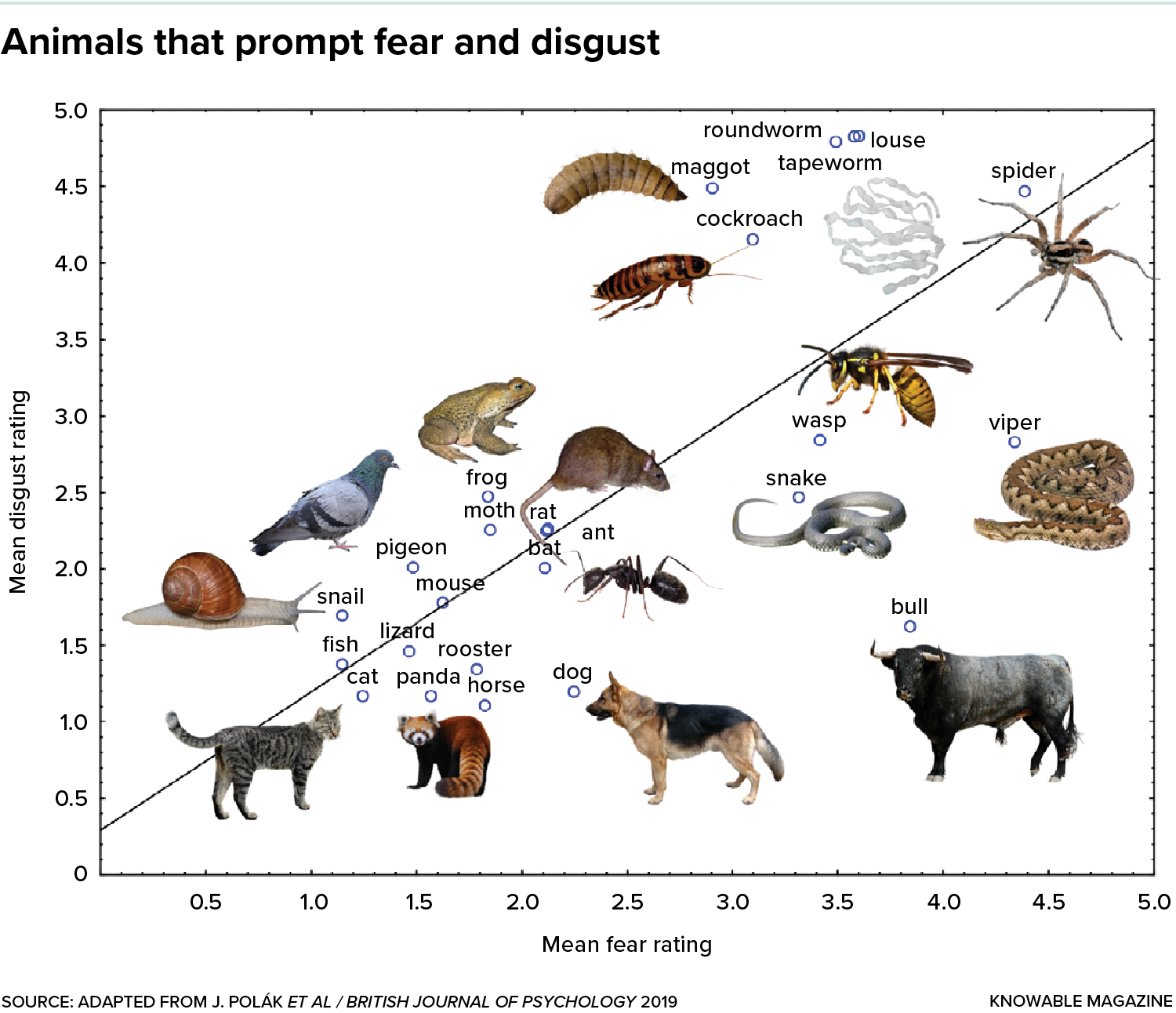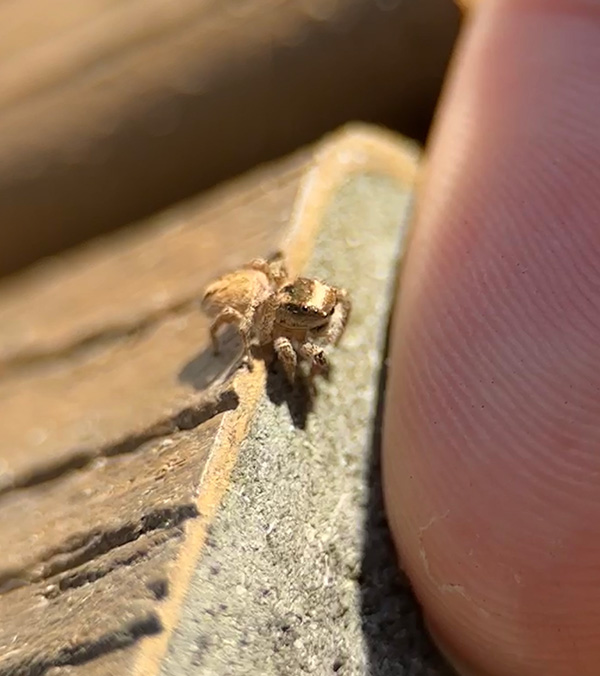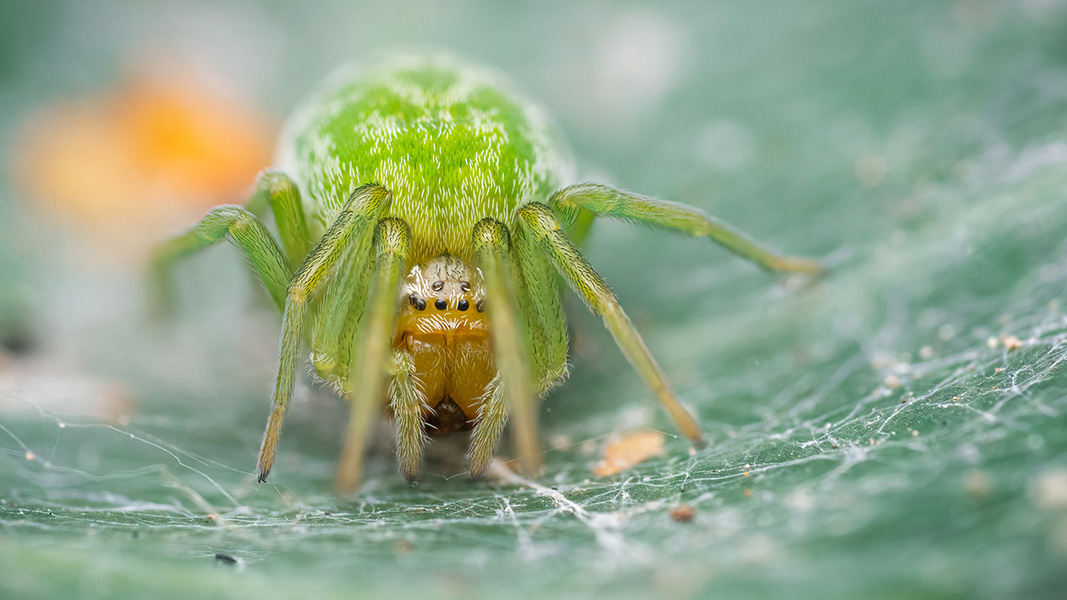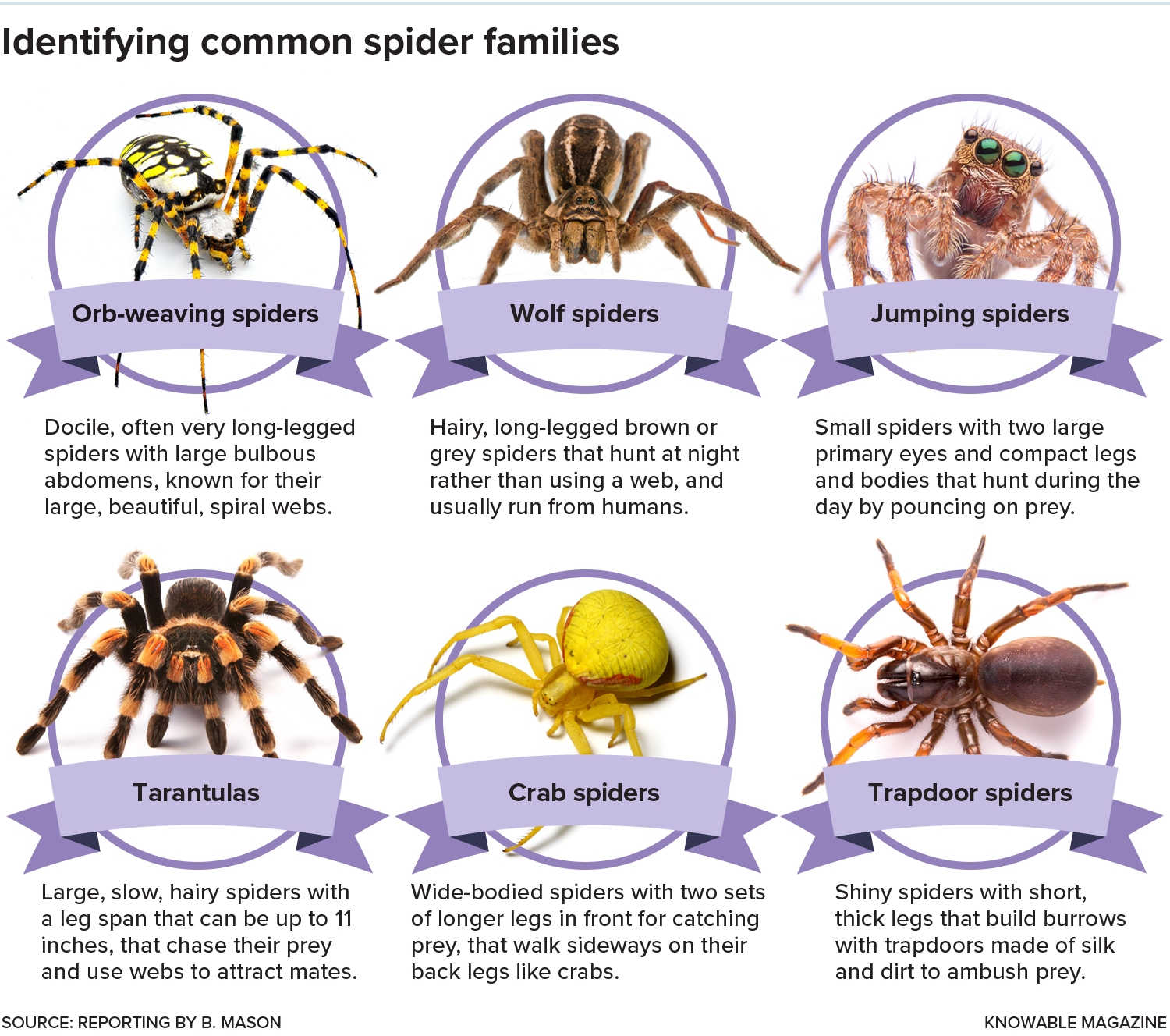Everyone should start counting spiders
Our collective arachnid aversion could be causing us to overlook something even scarier: Spiders may be disappearing.
Support sound science and smart stories
Help us make scientific knowledge accessible to all
Donate today
I’m obsessed with jumping spiders. But it wasn’t always so.
While never a spider hater or arachnophobe, I was pretty ambivalent about them for most of my life. Then I learned about jumping spiders: I’ve reported on their impressive vision (as good as a cat’s in some ways!), their surprising smarts (they make plans!) and the discovery that they have REM sleep (and may even dream!). I was hooked.
I also learned that jumping spiders may be in decline. In tropical forests, it used to be easy to find them in a matter of minutes, says behavioral biologist Ximena Nelson, who studies jumping spiders at the University of Canterbury in Christchurch, New Zealand. But for some species, that’s changed over the last couple decades. “Now, I mean, you just can’t find them at all in some cases.”
In fact, all over the world, all sorts of spiders seem to be disappearing, says conservation biologist Pedro Cardoso of the University of Lisbon. He and a colleague polled a hundred spider experts and enthusiasts globally about the threats facing the animals. “It’s more or less unanimous that something is happening,” he says.
But there are no hard data to prove this. Why not? There are likely a number of reasons, but one possible contributor keeps coming up in my conversations with arachnologists: People really do not like spiders. Even among the least popular animals on Earth, they are especially reviled. One recent study found that people think spiders are the absolute worst combination of scary and disgusting, beating out vipers, wasps, maggots and cockroaches.
It’s obvious why this is a problem for the house spider who ends up on the receiving end of a rolled-up newspaper. But if our distaste means scientists have a hard time finding the funds to study them, as some suspect is true, it’s also a problem for spiders writ large. For most potentially endangered spiders, there aren’t enough data to consider them for protection. We can’t help spiders if we don’t know which species are in trouble, or where and why they’re disappearing. And if you don’t care about the loss of spiders for their own sake, consider that crashing spider populations are bad news for a whole host of animals — including us.

Scientists asked almost 1,800 people to rate 25 species of animals according to how much fear and disgust a photo of each one elicited. The spider got equally high rankings for both fear and disgust from more people than any other animal. The spider was also deemed the scariest and nearly the grossest as well.
The case for why people should care about spiders is robust. First, the vast majority of spiders do not bite or harm people, despite rampant misinformation in the media that would have you believe most spiders are out to get you. In reality, a vanishingly small number of spiders are dangerous to humans. Instead, they prey on insects — including mosquitoes, cockroaches and aphids — that actually do cause harm to people in their homes, gardens and fields. Spiders are excellent natural pest controls, but they are often killed by pesticides aimed at those same insect pests. These toxic chemicals also harm people.
Spiders are important food sources for birds, fish, lizards and small mammals. And there are untapped benefits we humans could enjoy someday — if spiders don’t disappear first — such as potential pharmaceutical and pest control applications derived from compounds in their venom, and medical and engineering applications based on their incredibly strong silk.
None of this is likely to overcome the visceral aversion so many people feel. The fear and disgust is so strong and specific that some scientists have suggested spiders represent a unique cognitive category in our minds. Ask people to name a phobia, and I’ll bet arachnophobia is the first one they think of.
But there may be a way to address the animus and the data gap at the same time: We should all start counting spiders.

Jumping spiders like this female Habronattus pyrrithrix are often just a few millimeters long. They can be quite curious, looking back at humans who are looking at them, checking out fingers or shoes, and even jumping onto cameras pointed their way.
CREDIT: BETSY MASON
Changing minds
People are definitely willing to count things for science. More than half a million people participated in the annual Great Backyard Bird Count in 2023, identifying over 7,500 species over the course of four days in February. Of course, people really like birds.
But citizen, or community, science has also proven successful for small-scale projects with insects and other invertebrates, says Helen Roy, an ecologist at the UK Centre for Ecology and Hydrology in Wallingford, and coauthor of an assessment of the potential for citizen science in the 2022 Annual Review of Entomology. It offers people the chance to be a part of science, even to become local experts. “There are still discoveries to be made on people’s doorsteps,” Roy says. “And I think that’s tremendously exciting.”
Roy recently worked with a graduate student who received nearly 3,000 applications to participate in a citizen science project on the biodiversity of slugs. Yep, slugs. The 60 lucky people who made the cut went out into their gardens at night for 30 minutes, every four weeks for a year, to collect and attempt to identify every slug and snail they could find, and then send them alive to the scientists. Not only did the slug counters enjoy the task, it corrected some of the assumptions they had about the slimy little animals. “They’re not all pests,” Roy says. “Citizen science is a really wonderful opportunity to be able to challenge people’s thinking.”
Could this work for spiders? The UK’s Natural History Museum in London has already shown that it can on a national scale, with its Fat Spider Fortnight project on iNaturalist, a popular online platform for crowdsourcing identifications of plants, animals and more. In 2021, hundreds of people in the UK contributed more than 1,250 observations of 11 relatively large spider species the project had targeted, including the green meshweaver and the flower crab spider. The entries will be added to the British Arachnological Society’s Spider Recording Scheme, which has been collecting observations since 1987.

The Fat Spider Fortnight, a citizen science project in the United Kingdom, asked participants to report sightings of 11 relatively large spider species, including the green meshweaver (Nigma walckenaeri), pictured here. This species has been considered scarce in Britain, but now appears to be expanding its range.
CREDIT: ALEXIS / iNATURALIST UK
And there is reason to believe that learning about spiders can change how people feel about them, even in extreme cases. Australian author Lynne Kelly was so afraid of spiders that just going for a hike or being in her garden had become difficult. But she managed to conquer her arachnophobia, and today she welcomes spiders into her garden and even her house. Learning made the difference, says Kelly, who’s written a book about her transformation. Being able to identify species and understand their habits made their behavior seem less erratic. She began seeing house spiders as harmless roommates and, eventually, friends. “One of the secrets was, I give them names,” she says. “Giving them names made them individuals. So it wasn’t, ‘Ack! Spider!’ It was, ‘There’s Fred.’”
Regular spider despisers may also have a change of heart after getting to know their eight-legged neighbors. This is what happened to Randy Supczak, an engineer in San Diego, after he came across a spider in his driveway in 2019.
“It kind of freaked me out a little bit,” Supczak says. So he went online, found a Facebook group dedicated to identifying spiders, and uploaded a photo: It was a noble false widow. He read that the species is nocturnal. “So I went outside that night with a flashlight, and I was shocked with what I saw,” he says. “Just everywhere, spiders.”
Something about discovering this hidden world of spiders grabbed Supczak’s curiosity. “Immediately, I was obsessed with learning about them.” Since then, he’s become a spider evangelist and started his own Facebook group where he helps San Diegans identify and learn about local spiders. He’s found that a little bit of knowledge can turn someone from a squisher to a relocator. “I consider that a big accomplishment,” he says. “I’ll take that.”

Determining the precise species of spider often requires expertise and a microscope, but identifying the family and sometimes genus that a spider belongs to is something almost anyone with a smartphone camera can do.
Ecologist and self-proclaimed spider ambassador Bria Marty tested whether learning about spiders can change how people feel about them for her master’s thesis project at Texas State University in San Marcos. She recruited college students to find and identify spiders using an illustrated guide and then upload photos to iNaturalist. Marty, currently a PhD student at Texas A&M University-Corpus Christi, surveyed participants before and after the activity, and one thing jumped out: Afterwards, people reported being far less likely to react negatively to a spider. “Doing an activity like this really does help a lot around fear,” she says.
This kind of change has been known to happen to iNaturalist users, says Tony Iwane, the platform’s outreach and support coordinator and a self-described spider lover. He pointed me to a thread on the site’s discussion forum about how contributing to iNaturalist helped people overcome their fear of spiders, with users sharing the “gateway spider” species that changed how they felt. For @mira_l_b, it was the particularly tiny Salticid (jumping spider) species Talavera minuta. “If I am finding myself confronting life-long fears and cooing sweetly to tiny Salticidae,” she wrote, “then there’s hope for us all!”
When I finally figured out how to find jumping spiders in my neighborhood, it only endeared them more to me. Sometimes they jump away before I can get a good enough look to ID them or take a photo with my phone. But other times, they stop, turn around and look right at me. Something about locking eyes with a half-centimeter-long animal so different from us is amazing to me. It also makes for some pretty cute photos.
If a spider looks right at you, it’s probably a jumping spider. Oh, hello!
CREDIT: BETSY MASON
Spiders count
If even a fraction of the number of people counting birds were willing to do the same for spiders, would that generate data that could make a meaningful difference? Dimitar Dimitrov, an arachnologist who studies the evolution of spider diversity at the University Museum of Bergen in Norway, thinks it could.
During an interview in 2021 for a story on spider cognition, Dimitrov lamented the lack of scientific attention and funding that spiders receive relative to other animals like birds: “I think there are more ornithologists than species of birds.” I asked if citizen science could help fill the gap. “Definitely, I think this is the way to go,” he said.
We know so little, and biodiversity is declining so fast, he told me, even the level of funding national governments can muster for traditional science couldn’t handle the scale and urgency of the challenge. But involving the public has the potential to make a big impact in a short time, Dimitrov said. “All these people in their free time doing something like this as a hobby, a few hours here and there, can actually contribute a huge amount of information that is probably able to change, qualitatively, what we know about nature and biological diversity.”
Of course, identifying spiders is not the same as identifying birds. Most spiders are nocturnal, and their lives can be ephemeral and seasonal, perhaps necessitating more than one count per year. And in many cases, the species can’t be identified without looking at the reproductive parts under a microscope. Don’t worry, nobody is asking you to do this: A decent photo can often yield a genus-level ID, and sometimes even the species, with the help of arachnologists and amateur spider enthusiasts like Supczak. Even just determining which family a spider is in, whether it’s an orb weaver or a trapdoor spider for example, can be useful scientific data, Dimitrov says.
The University of Lisbon’s Cardoso was enthusiastic when I asked him about the potential for a worldwide citizen science project aimed at collecting spider data. “I think it will be really, really cool,” he says. “We’ll just need to have that critical mass in different countries to start this.”
Maybe you’ll be part of that critical mass if a global spider count comes to be. In the meantime, look around your house or garden, find some spiders, upload the photos, and discover who they are.
I know spiders won’t appeal to everyone the same way birds do. They don’t have beautiful feathers, and they don’t sing beautiful songs. But they also won’t fly away while you try to take a photo, especially if they are hanging out in a web.
And if you find a jumping spider, she just might turn around and look right at the camera, ready for her close-up.
10.1146/knowable-102523-2
TAKE A DEEPER DIVE | Explore Related Scholarly Articles




